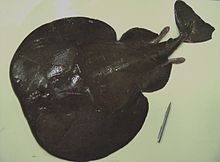Transcutaneous Electrical Nerve Stimulation is a form of electrotherapy designed for fast relief of acute and chronic pain. These days, small and efficient portable machines are used by suffers of acute pain and chronic pain to give them effective pain relief which means they can go about their daily lives in greater comfort. TENS can also used in the maternity ward, with many mothers swearing by these little units to help them through the sometimes painful process of birth. Although we may think this is relatively new technology, there is a fascinating history dating back thousands of years that led to the invention of these effective machines.
Egyptians and Electric Fish

Long before the invention of the TENS unit – thousands of years earlier, in fact – the ancient Egyptians discovered that the shocks administered by electric eels offered relief from pain. Heiroglyphs dating as far back as 2500BC show an electric fish, or eel, being used as a form of treatment.
Although the science of electricity would not be understood for many hundreds of years, the benefits of electrical stimulation continued to be recognised in the ancient world. Scribonious Largus was a Roman physician under the emperor Claudius who noted that standing on an electric fish offered pain relief. Largus went on to offer this crude form of electrical stimulation as a treatment for those suffering from headaches, migraines and even gout. He may not have known it, but Largus was way ahead of his time.
The Science of Electricity is Born
Many hundreds of years after Scribonious Largus, but still over 300 years before the first TENS unit, an English physician named William Gilbert recognised the force created by rubbing two surfaces against one another, and named this “electrus”, using a latin term. Not long afterwards, British scientist Thomas Brown developed Gilbert’s work and was the first to use the word “electricity” in his writings. By the end of the 17th Century, much was known about electricity including crude man-made methods of generating this force.
Benjamin Franklin is credited with being the one of the first in ‘modern’ times to use electricity for the relief of medical conditions. Famous in the mid 18th Century for flying a kite in a storm to prove that lightning was caused by electricity, Franklin was well known for his experiments with electricity and approached by people who believed that this force could heal their paralysis. Although a little sceptical, Franklin did administer treatment which offered some temporary relief.
By the 19th Century, scientists had invented a number of machines that administered static electricity specifically to relieve pain. These inventions, somewhat larger and far less sophisticated than the modern TENS machine, proved very popular until the emergence of medical painkillers, when interest waned. Interest was revived mid-20th Century and, with the help of American Neurosurgeon and pain relief pioneer, Clyde Norman Shealy, the first modern TENS unit was patented in 1974.

Why a TENS Unit?
Anyone who uses a TENS Unit for relief of chronic pain knows that this method is a highly effective solution that offers swift and effective pain relief for sometimes many hours at a time.
But TENS isn’t the only form of electrotherapy, although it does offer a superior solution for the relief of pain.
Electronic Muscle Stimulation (EMS) is an alternative to TENS, that stimulates specific muscles to increase their effectiveness and address chronic conditions in a different way. A TENS Unit, on the other hand, delivers electrical stimulation directly to the nerves.
The TENS method is grounded in the “Gate Theory”, which emerged in the 1964. This theory was put forward by two researchers who observed that nerves only transmit one kind of signal at a time. This meant that, if a nerve was being stimulated by low-level electrical impulses, pain signals would be prevented from reaching the brain. In other words, electricity applied to the nerves closed the ‘gate’ that allowed the brain to experience the sensation of pain. This theory has been proved correct with the invention of the TENS machine, now a small portable device that allows suffers of chronic pain to go about their daily lives, free from discomfort for many hours of the day.
The Invention of TENS Machines for labour
In 1987, it was observed that some mothers were not responding to traditional pain relief methods during labour, causing intense discomfort and possible complications during birth. Although TENS had been around for a number of years at this time, it was recognised that there were no units specifically for use during labour and consultant Ray Kriesler set about creating one with that purpose. First trialed in Melbourne, Australia, the first TENS systems for birth soon led to a small handheld device that allowed mothers in labour to manage the pain for themselves.
Most effective during the early stages of labour, the TENS unit nevertheless allowed some mothers to go without any epidural and achieve a natural birth. The International Journal of Gynaecology and Obstetrics noted:
“TENS application reduced the duration of the first stage of labour and the amount of analgesic drug administered. There were no adverse effects on mother or newborns.”
TENS is still used effectively in labour today, with modern TENS units allowing the mothers to boost the electrical impulses for short periods of time when contractions are at their worst.
Buying a Unit Today
After a long and fascinating history, the power of electricity has been harnessed to combat pain in small and convenient battery-powered units that are easy to buy. There is a wide selection of Units on the market today, and they are easy to buy from many sources, including online at websites such as www.tens.net and www.tenspulse.com. It is worth doing some research before you settle on a specific unit, and reliable sites such as tens.net compare the features of various units so that you can make an informed choice before you buy.
It is always recommended you speak to a doctor or other health professional before using TENS for your condition, to know whether it is effective for your condition and for help to correctly apply the pads. However, research has shown that a TENS unit is a very effective form of pain relief, both in the short and long term.

